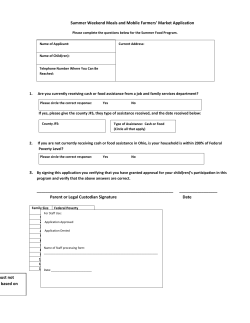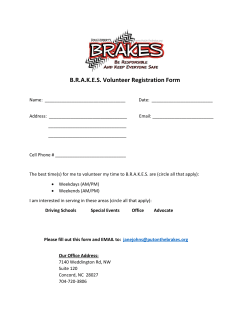
HW 8
Homework 8 Problems: Rotational Motion 1. The rotor on a helicopter turns at an angular speed of revolutions per minute. a. [3 points] Express this angular speed in radians per second. b. [4 points] If the rotor has a radius of 2.00 m, determine the tangential speed. What arc length does the tip of the blade trace out in ? c. [3 points] Suppose that the pilot opens the throttle, and the angular speed of the blade increases while rotating twenty-six times in 3.60 s. Calculate the average angular speed during this time. 2. A pail of water is rotated in a vertical circle of radius 1.00 m. a. [3 points] What two external forces act on the water in the pail? Which of the two forces is most important in causing the water to move in a circle? b. [4 points] What is the pail’s minimum speed at the top of the circle if no water is to spill out? c. [3 points] If the pail with the speed found in part (b) were to suddenly disappear at the top of the circle, describe the subsequent motion of the water. 3. An air puck of mass is tied to a string and allowed to revolve in a circle of radius on a horizontal, frictionless table. The other end of the string passes through a small hole in the center of the table, and a block of mass tied to it, as shown below. The suspended object remains in equilibrium while the puck on the tabletop revolves. a. [2 points] Draw a free body diagram for both objects b. [4 points] Determine the tension in the string. c. [4 points] Determine the speed of the puck. 4. A car initially traveling at 29.0 m/s undergoes a constant negative acceleration of magnitude 1.75 m/s2 after its brakes are applied. a. [7 points] How many revolutions does each tire make before the car comes to a stop, assuming the car does not skid and the tires have radii of 0.330 m? b. [3 points] What is the angular speed of the wheels when the car has traveled half the total distance? 5. One end of a cord is fixed and a small 0.500-kg object is attached to the other end, where it swings in a section of a vertical circle of radius 2.00 m, as shown below. When θ = 20.0°, the speed of the object is 8.00 m/s. a. [4 points] Find the tension in the string, b. [3 points] Find the tangential and radial components of acceleration. Find the total acceleration. c. [3 points] Is your answer changed if the object is swinging down toward its lowest point instead of swinging up? Explain your answer. Bonus [7 points]: A car rounds a banked curve where the radius of curvature of the road is , the banking angle is , and the coefficient of static friction is (slippery conditions). (a) Determine the range of speeds the car can have without slipping up or down the road. (b) Discuss conceptually what would happen to your answers to (a) if either increases or increases.
© Copyright 2025









